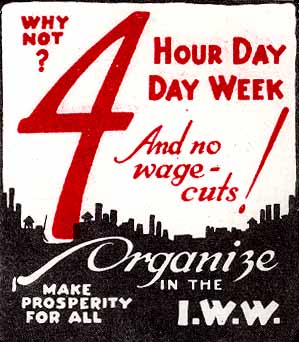EARLY FRENCH SOCIALISM RECONSIDERED-I.
THE PROPAGANDA OF FOURIER AND CABET
PAUL E. CORCORAN
https://tinyurl.com/y7x2ds77
UTOPIAN SOCIALISM
History of Europeon Ideas, Vol. 7, No 5, pp. 469-488, 1986
Pergamon Journals Ltd.
I. INTRODUCTION
French soc
ialism in the 1830s and 1840s has often been criticised for its motley
assembly of hopes and ideals, which is perhaps another way of saying that no
single thinker dominated the period with a system of ideas which formed a
paradigm for the general movement. The diversity of early French socialist
thought always involves studying some figures and ignoring others, thus
complicating any simple or comprehensive portrayal of socialism in this period.
Many socialist writers in these two decades have forced individual claims on our
interest and attention, but the entire movement deserves reconsideration if we
are to appreciate its variety as well as discover why French socialism has so often
been misunderstood and unfairly criticised for, among other points, lacking
systematic coherence and practical political realism.
An analysis of early socialist writers from their rhetorical perspective, focusing
upon the disposition of arguments and the rhetorical techniques employed, does
not support the accepted view. It is hardly necessary to rehearse the familiar
contentions that the French socialists somehow lacked originality and critical
depth, that they were wildly enthusiastic but politically impractical or tlitist, or
that they were hopelessly utopian and misunderstood the nature of social
oppression and the play of political forces required for radical social change. The
most superficial, but nonetheless frequent, of such criticism boils down, really, to
saying that they were ‘French’-emotional, dilettante, ingenious but unmethodical-as opposed to English (cool, rational, sceptical) or German
(systematic, thorough, stolid). The merits of that criticism are not enhanced by
the charge that a viewpoint is ‘unoriginal’ simply because a number of able
writers happen to share it. One must also be unpersuaded by an argument that a
thinker is ‘utopian’ when he is criticised on other points for being unsystematic or
reformist. 1
Having sprung to an early defence of the French socialists, one must at the
same time concede that there are a number of problems involved in trying to
make sense of these writers, especially for the modern reader of from any ‘postMarxist’ critical perspective. But this difficulty may well be more our own
problem than it is an indictment of a particular writer. Indeed, our present
concern is to reveal the preconceptions and misconceptions that stand in the way
of a clear view of what the French socialists were trying to do, and how they did it.
It is true that such writers as Etienne Cabet (1788-1856), ThCodore Dezamy
(1808-50) and Jean-Jacques Pillot (1808-77) were remarkably enthusiastic. The
*Department of Politics, University of Adelaide, Adelaide, South Australia 5001.
470 Paul E. Corcoran
sometimes apostolic fervour of Saint-Simonian, Fourier& and communist
journals now strains our modern incredulity. We may also be puzzled that ardent
proletarian revolutionaries proclaimed their highest priority to be moral and
intellectual reform, and that this could most effectively be accomplished by the
propagation of a new religion based upon scientific truths. Many of these
socialists regarded politics with utter disdain and took for granted that social
reform would occur independently of political institutions. Several socialists
believed that the mere publicaton of a book or a ‘system’ was the effective
beginning of the new age, and they seemed curiously indifferent to what steps
might come thereafter. Other socialists frankly doubted the efficacy ofgetting the
working-class involved in what was acknowledged as its revolution. Several
socialists with a ‘system’ to implement, e.g. Dezamy, carefully discussed the
transitional stage, but neglected to specify the critical point of how, by what
process, or even what kind of process (revolution, class war, etc.), power was to
be won so that the mechanical steps of implementation could begin. Moreover,
there was a widely shared assumption that socialism was a work of social science,
and that the movement was best advanced by directing one’s propaganda against
editors of the monarchist or republican daily press or competing socialist
journals. The strict prohibition of workers’ unions was seen as a major handicap
by some ‘worker socialists’, but even they felt that the ‘September laws’
restricting the press were a greater obstacle to the movement.
Such views were clearly paradoxical for a socialist movement which also
typically advocated class struggle, the abolition of private property and
absolute social equality. Nevertheless, a review of the socialist press in the period
183048 illustrates that such a tension was accepted. Representative texts from
two of the largest and most influential movements provide a rhetorical context
for assessing early socialist thought as a meaningful sphere of discourse, rather
than dismissing it as the muddled ideas of mediocre, fatuous minds.*
The intellectual and propagandistic character of a putatively popular
revolutionary struggle may seem less paradoxical if its rhetoric of ‘proclamation’
is understood to embody not merely a style (hortatory, enthusiastic, politically
naive) but rather a theory of communication. This argument, to be treated in
detail in Part Two of this study, requires a fundamental reconsideration of
‘utopian socialists’, and perhaps an overdue recognition that most of the ideas
they so passionately proclaimed-the equality of persons, the social basis of
poverty and crime, the instability of ungoverned enterprise and disorganised
labour-have not only been historically vindicated but have formed the basis of
modern political morality.


 P
P





